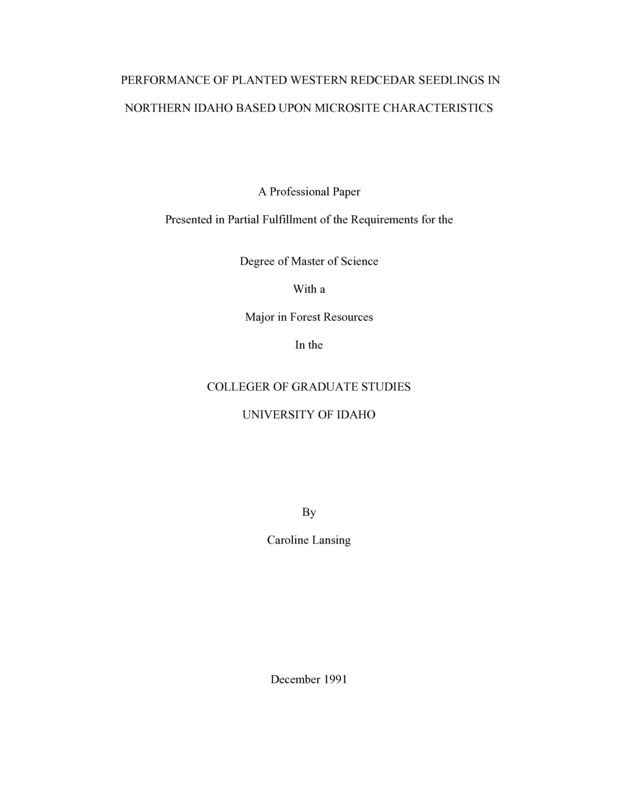PDF PREVIEW
Performance of Planted Western Redcedar Seedlings in Northern Idaho Based Upon Microsite Characteristics Item Info
- Title:
- Performance of Planted Western Redcedar Seedlings in Northern Idaho Based Upon Microsite Characteristics
- Creator:
- Lansing, Caroline
- Date Created:
- 1991-12
- Description:
- Limited plantation success in the past has caused many forest managers to rely on natural regeneration for western redcedar. However, increased demand for the species by the forest products industry necessitates prompt and successful regeneration following harvest. Therefore improved plantation survival for western redcedar is essential. This study evaluated various microsite characteristics including shade, cover, burn severity and surface litter composition as predictors for planted western redcedar seedling survival and two year performance. Four north Idaho sites were evaluated. Analysis included correlating various characteristics and total seedling biomass, construction of a regression model for predicting seedling mortality. A high degree of variability was found by site with burn severity being the single most important predictor variable. On burned sites seedlings showed the best survival and performance in the absence of competing vegetation and litter, while on unburned sites seedlings fared best in the presence of forbs, litter, and incipient residue.
- Document Type:
- Thesis
- Library Call Number:
- SD397.W46L36 1991
- Subjects:
- Big Meadow Creek microsite shade burn severity microclimate western redcedar thuja plicata surface litter composition survival rates silviculture
- UIEF Unit:
- Big Meadow Creek
- Location:
- UIEF; Big Meadow Creek
- Latitude:
- 46.799488
- Longitude:
- -116.812869
- Department:
- Department of Forest Resources
- Type:
- Text
- Format:
- application/pdf
Source
- Preferred Citation:
- "Performance of Planted Western Redcedar Seedlings in Northern Idaho Based Upon Microsite Characteristics", UIEF Research Exchange, University of Idaho Library Digital Collections, https://www.lib.uidaho.edu/digital/uief/items/uief_0047.html
Rights
- Rights:
- In copyright, educational use permitted.
- Standardized Rights:
- http://rightsstatements.org/vocab/InC-EDU/1.0/

